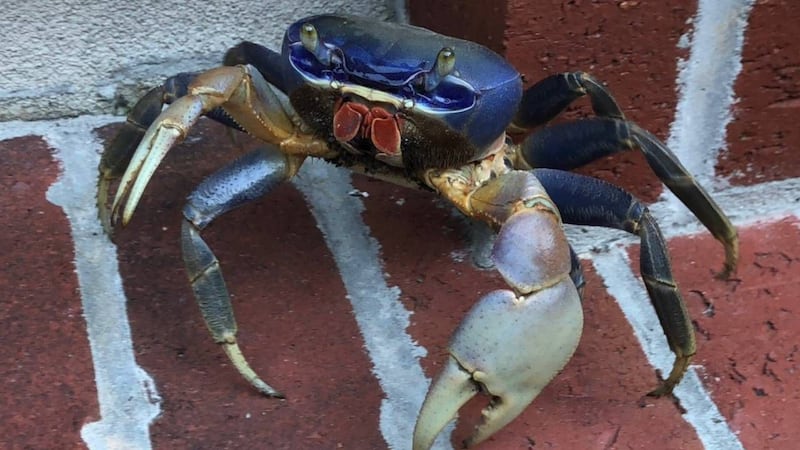ATLANTA — They may look kind of cute, but the Georgia Department of Natural Resources (DNR) says an invasive species of frogs has made their way into the state and there is nothing cute about them.
“Cuban tree frogs are an invasive species originating in Cuba, the Caymans, and the Bahamas,” and have recently made their way into Georgia, the University of Georgia said.
Daniel Sollenberger, senior wildlife biologist with the Georgia Department of Natural Resources Wildlife Resources Division, told the Augusta Chronicle that the Cuban tree frog is the biggest thing to be concerned about next to the Argentine black and white tegus, which has also recently been spotted in the Peach State.
[PHOTOS: These invasive species have all made their way into Georgia the last few years]
“They live on people’s houses and come out at night and eat bugs around your porch light,” Sollenberger told the newspaper. “They don’t really cause problems. But the Cuban tree frogs could cause some ecological problems in suburban areas.”
The largest of the frogs, typically the adult females, can grow up to 5.5 inches long. Males are typically smaller. The younger frogs are generally about 2 inches long, similar to other tree frogs.
RELATED STORIES:
- Invasive hornet species spotted in Georgia for first time, officials advise caution
- Wildlife officials concerned about invasive species of catfish spreading in Georgia
- Wildlife officials warn of large, invasive blue crab species moving into Georgia
“They can get three times the size of our next largest native tree frog, which is the barking tree frog,” Sollenberger said. “They start out small, but they can quickly grow as big as your hand.”
So far, the frogs have been spotted just across the border from Florida.
“This past year was the first time we documented it. If you live around Brunswick or Savannah, they’re breeding in retention ponds and ditches down there. We don’t know how far inland they could go because they’re somewhat tropical,” Sollenberger told the paper.
These amphibians have a varied diet of snails, millipedes, spiders, and other insects, but are also predators of native Floridian frogs. Cuban tree frogs often eat native species as well as lizards and small snakes. The native squirrel tree frog is especially susceptible to predation from the much larger and more competitive Cuban tree frog species,” WUFT-TV recently reported.
The DNR has confirmed to Channel 2 Action News that the frogs are now reproducing along the Georgia coast.
So how do you get rid of them? Sollenberger told the Augusta Chronicle they take similar steps as trying to get rid of mosquitoes.
“Remove any standing water from around your property like a pool. If you find individual frogs in your yard, you can capture and euthanize them. We tell people to put Orajel on their back and that will knock them out,” Sollenberger said.
If you come in contact with one of the frogs, DNR says to contact the Wildlife Resources Division.
RELATED NEWS:
©2024 Cox Media Group







